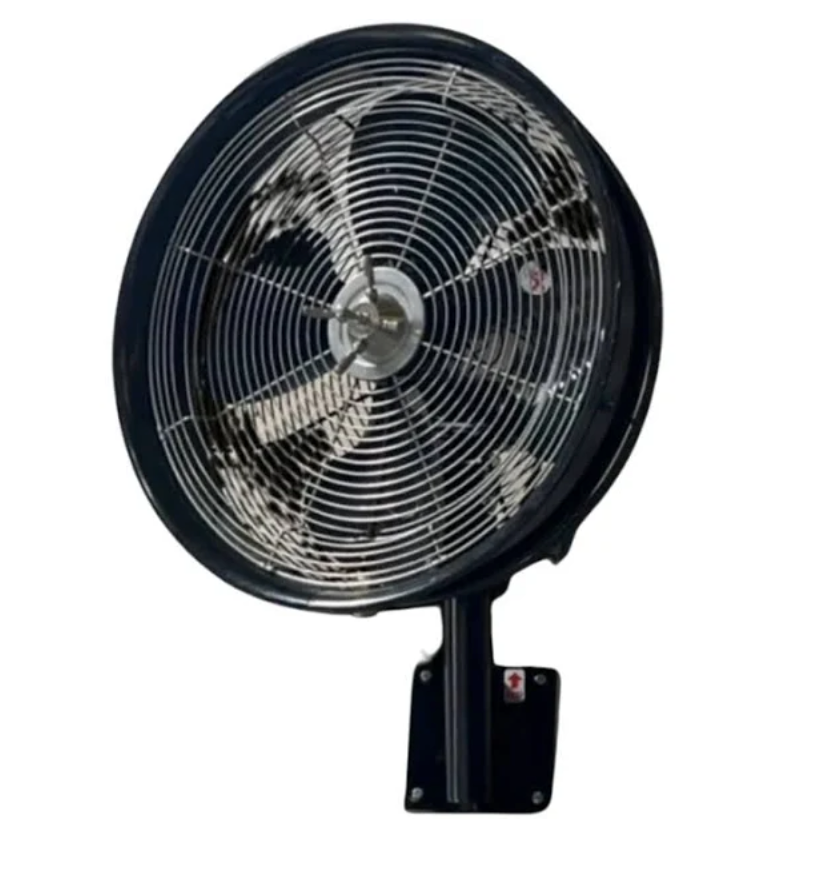Meat Temperatures: Essential Guide for Safe & Tasty BBQs
Meat temperatures are a crucial aspect of cooking, yet often overlooked.
Whether you're a seasoned pitmaster or an aspiring backyard chef, understanding meat temperatures is essential for creating delicious and safe meals on the grill.
In this comprehensive guide, we'll delve into the importance of using an instant-read thermometer and discuss USDA guidelines for various types of meats. We will also explore safe cooking practices on BBQs and grills to prevent foodborne illnesses associated with raw meats.
Additionally, we'll cover proper storage conditions for maintaining meat safety and share tips for reheating foods safely in microwaves. Lastly, we'll emphasize the need to check your thermometer's accuracy regularly to ensure optimal results when it comes to meat temperatures.
So fire up your grill and join us as we embark on this flavorful journey toward mastering the art of perfecting meat temperatures!
Understanding Meat Temperatures: The Key to Safe and Delicious BBQ
Before we dive into the mouthwatering world of BBQ Outfitters' products, let's get our facts straight on proper meat temperatures.
Why is this important?
Because it's crucial for reducing the risk of foodborne illnesses and ensuring a scrumptious meal every time you fire up that grill.
When cooking meat, it's important to use a proper thermometer to check the internal temperature. This is especially important for ground meats, which can harbor harmful bacteria like E. coli. The safe temperature for ground meats is 160°F.
For whole cuts of meat like steaks and roasts, the safe temperature varies depending on the level of doneness you prefer. For medium-rare meat, the internal temperature should be 135°F. For medium, it should be 145°F. And for well-done, it should be 160°F.
It's important to note that meat continues to cook even after it's been removed from the heat source. This is called carryover cooking, and it can cause the internal temperature to rise by 5-10°F. To avoid overcooking, take it off the heat when it's 5-10°F below the temperature you're aiming for.
Also, if you want to get accurate temperature readings, go for a digital thermometer with a thermometer probe. You could use an instant-read thermometer, but it might not be as accurate.
Now that we've covered the basics of meat temperatures, let's explore how BBQs and grills can make it easier to cook your food safely while enhancing its flavor. And speaking of BBQs and grills, BBQ Outfitters has some amazing products designed specifically for Texans like us who love outdoor cooking.
Safe Cooking Practices on BBQs and Grills
Let's get right into the tasty details.
We all know that a good ol' Texas BBQ is hard to beat, but did you know there are some simple techniques to ensure your meat reaches safe temperatures while enhancing flavor? Let me walk you through them:
Indirect Heat vs Direct Heat Methods
Direct heat: Perfect for quick-cooking items like burgers or veggies. Your food sits directly above the heat source, resulting in those beautiful grill marks we all love.
Indirect heat: Ideal for larger cuts of meat or slow-cooking recipes (think brisket). The food cooks away from the flames, allowing it to cook evenly without burning the outside. Check out this guide on indirect grilling.
Searing Technique for Perfect Crust
Searing locks in moisture and creates an irresistible crust on your steaks or chops. Dive into the science of searing here. Place the meat over high heat for a few minutes on each side, then move it to indirect heat to finish cooking at a lower temperature. Then, move it to indirect heat to finish cooking at a lower temperature.
Temperature Monitoring
An instant-read thermometer is your best friend when it comes to ensuring safe meat temperatures. Poke that bad boy in the thickest part of the meat (avoiding bone) and follow these USDA guidelines:
- Ground meats: 160°F
- Chicken thighs and breasts: 165°F
- Medium-rare steak: 145°F
- Leftover food: 165°F
Remember, the meat continues to cook even after it's removed from the heat source, a process called carryover cooking. So, removing the meat from the heat source a few degrees before it reaches the desired temperature is best.
BBQ Outfitters' Grills & Outdoor Kitchens
Tired of your old grill? Look no further than BBQ Outfitters. They offer a wide range of BBQ products, outdoor kitchens, fire pits, and more.
Foodborne Illnesses Associated with Raw Meats
Let's dive into the nitty-gritty of common foodborne illnesses caused by improper handling or undercooking of raw meats.
It's essential to be aware of these risks, especially for vulnerable groups like elderly individuals, children under seven years old, and those with compromised immune systems.
Campylobacter Infection from Poultry
Campylobacter is a sneaky bacterium often found in raw poultry that can cause diarrhea, fever, and abdominal cramps.
To avoid this unwelcome guest at your BBQ party, always cook the chicken to an internal temperature of 165°F (74°C). Use a meat thermometer to ensure that the chicken is cooked thoroughly.
E.coli Contamination in Beef Products
No one wants E.coli crashing their cookout.
This pesky bacteria can cause severe stomach cramps and bloody diarrhea if you don't handle beef products properly or cook them thoroughly. Use a meat thermometer to ensure that ground beef is cooked to at least 160°F (71°C) and steaks are cooked to a minimum of 145°F (63°C) followed by a three-minute rest time.
Staphylococcus Aureus Risks Linked to Lamb Consumption
To finish off, Staphylococcus aureus is an organism that can lead to food poisoning when the lamb is not cooked thoroughly or handled incorrectly. Use a meat thermometer to ensure that lamb is cooked to an internal temperature of 145°F (63°C) with a three-minute rest time.
Now that you're equipped with the knowledge to prevent these foodborne illnesses, let's move on to maintaining proper meat temperatures while grilling up some delicious BBQ.
Proper Storage Conditions for Meat Safety: Keep it Cool and Fresh

Alright, let's talk meat storage.
Did you know that proper storage conditions are crucial to prevent foodborne illnesses and maintain the quality of your meats?
Fear not, we've got you covered with some handy tips on how to store your meats safely in both refrigerators and freezers.
Refrigerator Temperature Guidelines: Chill Out.
To keep your raw meat fresh and safe, make sure your refrigerator is set at a temperature below 40°F (4.4°C).
This prevents bacteria growth, ensuring delicious steak stays safe until it hits the grill.
Freezer Storage Tips: The Big Freeze
For longer-term storage, place those juicy cuts in a freezer set at -18°C (-0.4°F) or lower.
Wrap them tightly in plastic wrap or aluminum foil before freezing to preserve their quality even more effectively.
Vacuum Sealers: Suck It Up.
Vacuum sealers can be game-changers when it comes to storing food without loss of quality.
These nifty gadgets remove air from the packaging, allowing your meats to stay fresh for up to two years when stored safely in a freezer.
Defrosting Do's and Don'ts: Thaw It Out
When it's time to cook that frozen meat, make sure you're defrosting it properly.
Thaw it in the refrigerator, cold water, or microwave - but never at room temperature.
Now, let's talk about cooking meat to the right temperature.
Meat Thermometers: The Secret to Perfectly Cooked Meat
Using a meat thermometer is the best way to ensure that your meat is cooked to the right temperature.
Ground meats should be cooked to an internal temperature of 160°F (71°C) to ensure that any harmful bacteria are killed.
For medium-rare steak, the internal temperature should be 135°F (57°C).
Chicken thighs should be cooked to an internal temperature of 165°F (74°C).
Carryover Cooking: The Temperature Will Keep Rising
Remember that meat continues to cook even after it's been removed from the heat source. This is called carryover cooking.
For this reason, it's important to remove your meat from the heat source a few degrees before it reaches the desired temperature.
For example, if you want your steak to be medium-rare, remove it from the heat source when the internal temperature reaches 130°F (54°C).
Types of Meat Thermometers: Which One to Use?
There are two main types of meat thermometers: instant-read thermometers and digital thermometer probes.
Instant-read thermometers are great for checking the temperature of your meat quickly, but they're not meant to be left in the meat while it's cooking.
Digital thermometer probes, on the other hand, can be left in the meat while it's cooking, allowing you to monitor the temperature without opening the oven or grill.
Now that you know how to store and cook your meat safely, you can enjoy your BBQ experiences with confidence.
Reheating Leftovers Safely: Microwave Precautions
Alright, let's dive into the world of reheating.
We all love leftovers, but it's crucial to reheat them safely and effectively.
Food safety guidelines suggest that reheated foods must reach an internal temperature of 165°F (75°C) to prevent the growth of harmful bacteria.
But how do we ensure even heating in microwaves?
Why Reaching the Right Temperature is Important
No one wants their tasty BBQ leftovers ruined by food poisoning.
To avoid this culinary catastrophe, always use a meat thermometer to check the internal temperature of your food. Ground meats, chicken thighs, and leftover food should reach 165°F (75°C) to kill any potential bacteria lurking within.
Remember, the temperature of the meat continues to rise even after it's removed from the heat source. This is called carryover cooking, and it's why it's important to remove the meat from the heat source a few degrees before it reaches the desired temperature.
Now, go forth and reheat with confidence.
Looking for more tips on BBQ safety and outdoor cooking? Check out BBQ Outfitters for all your grilling needs, including digital thermometers and thermometer probes.
Hurry up, those leftovers are waiting.
Checking Thermometer Accuracy Regularly
Let's talk about the unsung hero of your grilling adventures - the trusty meat thermometer.
But wait. Before you roll your eyes and skip this section, let me assure you that regularly checking your thermometer's accuracy is crucial for safe cooking temperatures and reducing the risk of foodborne illnesses.
So how do we ensure our thermometers are accurate?
- First, fill a glass with ice and water and insert the thermometer probe. It should read 32°F (0°C). If it doesn't, adjust it accordingly or replace it.
- Next, boil the water and insert the thermometer probe. It should read 212°F (100°C) at sea level. If you're above sea level, adjust the temperature accordingly.
- Finally, check the accuracy of your instant-read thermometer by inserting it into the thickest part of a chicken thigh without touching the bone. It should read 165°F (74°C).
Now that we know our thermometers are accurate, let's talk about the safe internal temperatures for cooking meat.
- Ground meats, like burgers and sausages, should be cooked to an internal temperature of 160°F (71°C) to ensure any harmful bacteria are killed.
- For medium-rare meat, the internal temperature should be 135°F (57°C) for steaks and 145°F (63°C) for roasts.
- Remember that meat continues to cook even after it's removed from the heat source, a process called carryover cooking. So, it's best to remove the meat from the heat source when it's a few degrees below the desired temperature.
Ensuring your meat is cooked to a safe temperature is crucial for food safety and preventing food poisoning. Don't rely on the color of the meat or juices to determine if it's cooked. Always use a meat thermometer.
So there you have it. A key move to guarantee a delightful and secure BBQ event for you and your family is necessary.
Now go forth and grill with confidence, knowing that your trusty meat thermometer has got your back (and your meat).
BBQ Outfitters' Grills & Outdoor Kitchens: Your Ultimate Texas BBQ Experience
If you're looking to take your outdoor cooking game to the next level, look no further than BBQ Outfitters - your one-stop shop for all your grilling needs.
From meat thermometers to custom outdoor kitchens, we've got you covered. Let me break it down for y'all:
Types of Grills Available at BBQ Outfitters
Pellet Grills: These bad boys use wood pellets and offer precise temperature control, making them perfect for smoking or slow-cooking meats.
Gas Grills: Looking for convenience? Gas grills heat up quickly and provide even cooking temperatures, making them ideal for busy grill masters.
Kamado-style Cookers: Say hello to versatility. These ceramic cookers are great for grilling, baking, roasting, and smoking - talk about a multitasker.
Customizing Your Outdoor Kitchen
Dreaming of an Instagram-worthy backyard?
Let us help you design the ultimate custom outdoor kitchen, tailored specifically to your space and preferences.
- Add built-in gas or pellet grills that blend seamlessly into your countertop area.
- Incorporate side burners so you can whip up sauces while keeping an eye on those juicy steaks.
- Install a pizza oven for the perfect crispy crust every time - who doesn't love pizza?
But wait, there's more.
We also offer fire pits and patio accessories to complete your outdoor oasis.
Fire pits are not only great for roasting marshmallows but also create a cozy ambiance during those cool Texas nights.
Add some stylish patio furniture, and you'll have the ultimate backyard retreat that even your neighbors will envy.
Now, let's talk about something important - meat temperatures.
When cooking meat, it's crucial to ensure it reaches a safe temperature to avoid food poisoning. Use a meat thermometer to check the internal temperature of your meat. Ground meats should be cooked to 160°F, while whole cuts of beef, pork, lamb, and veal should reach 145°F for medium-rare, 160°F for medium, and 170°F for well-done.
Chicken and turkey should be cooked to an internal temperature of 165°F, and don't forget to check the temperature of any leftover food before eating.
Remember, the meat continues to cook even after it's removed from the heat source, a process called carryover cooking. So, it's best to remove the meat from the heat source when it's a few degrees below the desired temperature.
Invest in a digital thermometer or an instant-read thermometer with a thermometer probe to ensure accurate readings. And always sanitize your thermometer after each use to maintain food safety.
So, what are you waiting for?
Create unforgettable memories with friends and family while cooking up mouthwatering meals using BBQ Outfitters' top-notch products - all while keeping food safety in mind.
FAQs in Relation to Meat Temperatures
What are the Proper Temperatures for Meats?
The proper temperatures for cooking different types of meats vary. According to USDA guidelines, poultry should be cooked to 165°F, ground meat, and egg dishes to 160°F, and beef, pork, lamb, and veal steaks or roasts to at least 145°F with a three-minute rest time.
How Does Temperature Affect Meat?
Temperature affects meat in various ways, including texture, flavor development, and safety. Proper cooking temperature ensures that harmful bacteria are killed while preserving tenderness and juiciness. Higher heat can cause proteins in the meat fibers to contract, resulting in toughening, whereas lower heat allows connective tissues to break down slowly, creating tender results.
What is the FDA Meat Temperature?
The FDA recommends following USDA guidelines for safe minimum cooking temperatures. These include 165°F for poultry, 160°F for ground meats and egg dishes, and at least 145°F with a three-minute rest time for beef, pork, lamb, or veal steaks or roasts. More information can be found on FDA's Safe Food Handling page.
What is the Ideal Temperature for a Meat Room?
An ideal temperature range to store raw meats safely in a commercial setting like a meat room would be between 32-40°F (0-4°C). This helps prevent bacterial growth while maintaining the freshness of the product. Regularly monitor these conditions using thermometers to ensure proper storage.
Conclusion
Understanding meat temperatures is crucial for ensuring safe and delicious meals. By using an instant-read thermometer, following USDA guidelines, practicing safe cooking methods, storing meat properly, reheating foods safely, and checking thermometer accuracy regularly, you can prevent foodborne illnesses associated with raw meats.
At BBQ Outfitters, we offer a variety of grills and outdoor kitchens to help you cook your meats to perfection. Whether you prefer indirect heat or direct heat methods or want to sear your meats for a perfect crust, our products have covered you.
If you're looking for quality BBQ products in Texas that will help elevate your cooking game while keeping safety in mind when it comes to meat temperatures, then visit BBQ Outfitters. Our products are perfect for Texans looking for BBQ products, outdoor kitchens, fire pits, and more.












